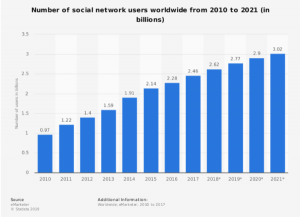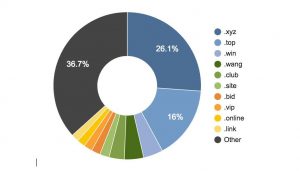Learn the key points of friction between marketing and IT and how to enhance communication and effectiveness.
Marketing and IT staff don’t see the world the same way, which can cause friction for inter-departmental projects. This article explains the key points of friction and shows how to break through those barriers and enhance communication and effectiveness.
Solving the IT/marketing divide is increasingly crucial as technology becomes central to almost every aspect of business. IT and marketing staff need to understand the sources of conflict and take positive steps to avoid them.
Part 1: Different cultures
Marketing: “I don’t know. Let’s test it.”
IT: “I need a requirements document.”
IT’s main tool is the computer, which nudges them toward a particular mindset. IT staff want to:
- Automate.
- Use databases and templates.
- Limit exceptions.
- Build once and use it many times.
IT wants dependable and repeatable processes and needs a way to predict and manage change.
For marketers, doing the same thing twice means you didn’t learn anything the first time. Marketing needs to try new things and implement what’s been learned.
As my friend Wade puts it, a computer is very good at doing one thing a million times. Marketing wants to do a million things at one time.
Stability vs. learning
IT departments strive for stable and dependable processes that can be repeated consistently. They focus on ensuring the efficiency and reliability of systems and operations.
In contrast, marketers see repeating the same approach as a missed opportunity for growth and improvement. Marketing thrives on innovation and adaptation. Marketers want to take risks and experiment with new ideas.
This fundamental difference creates tension but also presents an opportunity for marketing and IT to complement each other.
IT’s business priorities
Historically, IT departments have functioned as internal entities, emphasizing support, infrastructure and network management. They protect data and systems against both internal and external threats.
The IT power structure often consists of support and infrastructure personnel, with a relatively thin strategy layer. This creates a kind of tech bureaucracy that can get in the way of fast-moving projects and business priorities.
Timetables: Balancing deadlines and delays
Marketing departments frequently operate under strict deadlines, driven by the urgency of campaigns and promotions.
In contrast, IT projects often face delays due to complexities, resource constraints and unforeseen challenges.
To bridge this gap, marketing and IT need to establish clear schedules – as early in the process as possible – with a clear statement of deliverables and drop-dead dates.
Details vs. big picture: Perspectives matter
When embarking on a new project, IT professionals prioritize the technical aspects, considering system integration, server resources, security implications and long-term maintenance.
Marketers have a very different focus. They’re looking at success metrics, visual aesthetics, user experience and adaptability. If something doesn’t work the way they expected (or, let’s face it, sometimes it’s only a guess), they want to be able to change it.
Collaborative success requires being upfront about differing expectations. If marketing foresees a possible need to pivot to a new strategy based on user input, they must clarify that from the start.
Sources of friction
Given the different perspectives of marketing and IT, here are some common sources of friction. Being aware of them is half the battle, but it’s also important to plan to avoid them.
- Half-baked ideas.
- Emergency projects.
- Failure to respect process and timelines, especially in the approval process.
- Requiring a huge investment in a project whose results don’t justify the effort.
- Piling on non-critical requirements.
- A lack of communication and collaboration.
- Constantly changing requirements.
- Inadequate testing and quality assurance.
- Unrealistic or unclear expectations.
- Insufficient data or a failure to anticipate what data will be required to evaluate the project’s success.
Part 2: Marketers need to learn the technology
Marketers need to develop a degree of technological literacy to establish effective collaboration with IT. By familiarizing themselves with the underlying technologies, marketers can:
- Communicate more effectively with IT professionals.
- Gain insights into potential solutions.
- Protect themselves from being deceived.
The chief marketing technologist
Marketers should take the initiative to understand how technology impacts their strategies and campaigns. At least one person in the marketing department has to become the “chief marketing technologist,” possessing a comprehensive understanding of all the relevant systems, the business objectives of websites and platforms, technical requirements, costs and potential solutions.
It’s also a good idea for IT to have someone on staff who understands the marketing department’s goals and priorities. But in my experience, it’s absolutely crucial to have a marketing technologist on the marketing side of the business.
Essential knowledge: Technological foundations
Marketers should ensure they understand the basics to communicate effectively with IT. This includes understanding:
- Server-client dynamics.
- The importance of templates and databases.
- Basics about apps.
- The purpose of caching.
- The benefits of using a database.
- Generally, how databases work and the trade-offs between features, graphics, load speed and bandwidth.
Code, design and data
Marketers don’t have to be designers but should be familiar with how things work. This includes:
- HTML and style sheets, including the essentials of responsive design.
- Cookies, including the basics of user tracking.
- Web-based analytics tools.
- Email systems.
- How apps work.
- Ad management systems.
The list will vary by company and industry. The basic point is that marketers need to know enough to know what’s possible so they can come up with (reasonable) new ideas.
Part 3: The balancing act
Collaboration between marketing and IT requires an approach that acknowledges and bridges the cultural gap I’ve been explaining. The following strategies can help.
Be a diplomat
First things first. Recognize there’s a significant cultural gap between marketing and IT. Approaches that work in sales and marketing, such as urgency and motivational tactics, may not resonate with IT professionals.
It’s also important to find the right way to communicate. It’s probably not email, Slack or just dropping by. A Jira board, a marketing work management platform or some other project management tool may be the best bet.
The requirements document
When IT requests a requirements document, it’s not their polite attempt to say, “Go away, kid, you bother me.” IT wants clarity on the project so they can figure out which systems will be affected, the basic scope of the project, etc. Without sufficient detail, they can’t agree on timelines.
However, marketers shouldn’t spend a month writing a detailed requirements document. They should start with something relatively simple, have a preliminary conversation and then find out what else IT needs so they can focus their efforts and deliver the desired outcomes.
Get IT involved early. If you don’t, you only have yourself to blame if they end up blocking things later.
Balancing perfection and progress
I like to divide IT professionals into two groups: yes and no. Some IT people will immediately say yes, then come back a few hours later with a list of all the problems and barriers. Some will say no, then come back an hour later with something similar they might be able to do.
My friend Wade would say “no” to new ideas. Then he’d go smoke a cigarette and come back an hour later and say, “This is on staging.” And it was usually 90 percent of what we wanted.
You just have to learn to deal with people as they are.
IT professionals and marketers can be persnickety perfectionists or the “ready, fire, aim” type. Figure that out before it bites you in the rear.
Understand what kind of people you’re dealing with so you can communicate and plan effectively.
Successful collaboration is a necessity
In the fast-paced digital landscape, collaboration between marketing and IT is necessary.
By acknowledging the differences in culture, developing technological literacy, embracing the right approach and fostering effective collaboration, organizations can maximize the professional capabilities of their IT and marketing functions.
The post How to foster effective collaboration between marketing and IT appeared first on MarTech.
MarTech(5)








